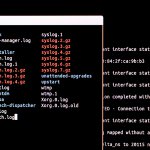Why multi-everything IT is the new normal

Enterprise organizations used to have an IT department. In truth, they still do, but the ‘department’ has become less a physical space and progressed to become an internetworked entity of multi-layered virtualized modules and neural nodules working in motion with an increasingly abstracted set of components and services.
Tech commentators like to call this new ‘way of being’ the multi-model, multi-modal reality of a new-age cloud. It is a new age of choice, but these new freedoms also have implications.
Opposing DNA strands
Modern technology environments will now have quite markedly different strands of DNA running in close proximity to each other.
In the database section, IT shops will run some SQL and some NoSQL. Bigger enterprises will think nothing of running competing sets of Enterprise Resource Planning (ERP) systems side-by-side. These disconnects often happen as a result of mergers and acquisitions… but equally, these scenarios come about because different teams start different projects at different times under different management.
In the new world of cloud, many customers will buy services from more than one Cloud Services Provider (CSP). Often because of different latency performance characteristics and often because of different regulatory compliance requirements, companies find that they need more than one cloud. These same companies aren’t balking at complexity, i.e. they often also run different cloud orchestration systems too.
So, no big surprise then, it’s a multi-cloud world after all.
Multi-cloud reality
Multi-cloud may be fabulous in its ability to offer choice and fine-grained tuning, but with fabulous flexibility comes great responsibility… and it’s a responsibility to be able to deliver portability across different clouds and the security controls to be able to perform these actions safely.
Multi-cloud must be fast, plus it must be scalable. Oh, and did we mention that all the extensions to different services must be fully interoperable and robust? Some cloud database services will be tuned for larger volume transactional throughput, while others will be tuned for storage, big data analytics or some deeper memory access function.
We can safely say that the responsibility curve is proportional to the complexity and diversity of the individual IT stack inside any given organization. So, is that the bottom line, or is there more to think about?
In fact, the multi-layer information vortex goes even deeper.
YOU MIGHT LIKE

Why your company needs an API strategy
Deeper data vortex
Software vendors will often release a distribution of their software platform for a specific other technology. This means that a database management technology might release a specific distribution for a specific database… and then another distribution for another database. A security provisioning and protection layer specialist might release a specific distribution for a specific cloud provider.
The potential for multiplex complexity is the reality of the contemporary approach to hybrid multi-cloud deployment. But it’s beyond multi-cloud, multi-database, multi-orchestration multi-modal IT. Really, we should be calling this multi-everything. Information workloads live everywhere in many forms and being able to track and manage them is the Holy Grail of cloud freedom.
“The number one concern of enterprises moving to hybrid cloud is maintaining cross-cloud security wherever the workload lives,” noted Forrester Analytics, in its Global Business Technologies Infrastructure Survey.
New age of ITAM
The technology industry’s IT Asset Management (ITAM) function used to be viewed as a group of tech-accountant ‘bean counters’ who wanted to take stock of what IT was deployed in order to meet licensing requirements.
If ITAM got a bit sexier with cloud, it gets positively Hollywood glitzy in multi-everything because companies now realize that they must track a myriad group of IT resources, some of which will be in-house and some of which will come from third parties.
The emergence of multi-everything has created a new subset of technology in and of itself. In the search for the so-called ‘single source of truth’ across disparate tech resources, software vendors are building unified interfaces that claim to able to glean an agnostic view of data, whatever kind of topography it exists upon.
A casual Google of any term along the lines of ‘multi-cloud management’ throws back major services offerings from all the ‘usual suspect’ big IT vendors. It’s almost like they think ‘okay, nobody buys from a single vendor source anymore, so we may as well embrace the chaos and try and sell customers management tools to allow them to have more freedom that we would ideally like.’
It is a small world after all, but it’s also a multi-everything world of IT.








